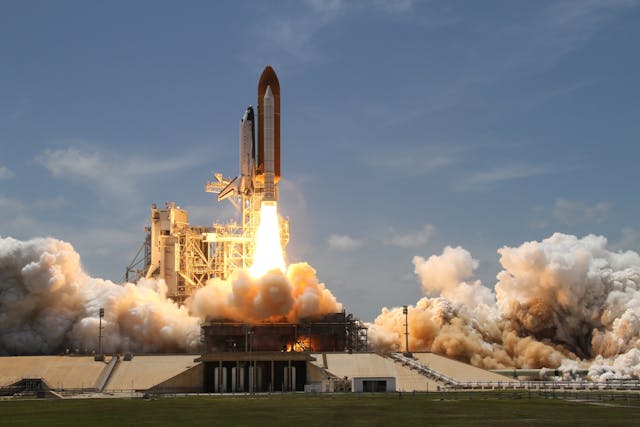
New Delhi | October 16, 2025: India’s space ambitions are poised to reach historic new heights as the Indian Space Research Organisation (ISRO) outlines a future that includes placing Indian astronauts on the Moon by 2040, launching its first crewed spaceflight by 2027, and establishing the country’s very own space station by 2035.
These announcements come as part of a detailed roadmap shared by ISRO Chairman V. Narayanan, who spoke about the agency’s current progress, upcoming milestones, and long-term goals during his address at the 35th convocation ceremony of BIT Mesra and in a recent media interaction.
Gaganyaan: India’s Human Spaceflight Dream Nears Reality
At the heart of ISRO’s plans is Gaganyaan, India’s maiden human spaceflight mission, which remains on course for launch in the first quarter of 2027. Ahead of this monumental journey, ISRO will conduct three uncrewed test missions, the first of which is scheduled for December 2025. It will feature Vyommitra, a half-humanoid robot developed to mimic human physiological responses in space.
These missions are crucial to ensuring safety, system reliability, and mission success before Indian astronauts eventually take flight.
India’s Lunar Leap: Targeting 2040 for Crewed Moon Landing
Adding to the nation’s space legacy, India has set its sights on achieving a crewed lunar mission by 2040. This vision, outlined by Prime Minister Narendra Modi, calls for not only landing Indian astronauts on the Moon but also ensuring their safe return—making India one of the few countries capable of conducting a complete human lunar mission.
To make this vision a reality, ISRO is also focusing on upgrading its launch infrastructure and heavy-lift capabilities. One major objective is developing a next-generation rocket capable of lifting up to 80,000 kg to Low Earth Orbit, a necessary step toward deep space missions.
India’s Own Space Station: Bharatiya Antriksh Station by 2035
By 2035, India aims to launch its first indigenous space station, the Bharatiya Antriksh Station (BAS). According to Narayanan, initial modules may be deployed in orbit as early as 2027, offering a platform for sustained scientific research in microgravity and space technology.
The space station project will further bolster India’s autonomy in space exploration and enable long-duration missions vital to deep-space travel.
Looking Outward: Missions to Venus, Mars, and the Stars
In addition to its lunar aspirations, ISRO is expanding its interplanetary programme. A Venus Orbiter Mission (VOM) has been approved, aimed at studying the atmospheric composition and surface conditions of Earth’s mysterious twin planet.
Future projects also include:
-
Chandrayaan-4 and Chandrayaan-5 – building on the legacy of India’s successful lunar missions
-
A new Mars mission – following the triumph of Mangalyaan
-
AXOM, a priority astronomical observatory that will deepen understanding of the universe
ISRO’s Aditya-L1 mission, focused on studying the Sun, has already generated over 15 terabits of solar data, providing valuable insights into solar activity, including coronal mass ejections and space weather—crucial for spaceflight safety.
Global Collaboration, Indigenous Strength
While India remains firmly committed to self-reliance, ISRO’s future includes strategic international partnerships. Collaboration will be approached through a lens of scientific alignment and national interest. This balanced approach will ensure India’s growing role as a global space power without compromising its autonomy.
ISRO’s transformation also reflects the impact of recent space sector reforms, which have welcomed startups, private companies, and academic institutions into India’s space ecosystem via IN-SPACe (Indian National Space Promotion and Authorisation Centre). This open approach is creating a vibrant innovation-driven environment that accelerates mission development and commercial opportunities.
ISRO’s Commercial Strength and Technological Edge
India has already demonstrated its reliability as a space-faring nation by launching 433 satellites for 34 countries, showcasing the commercial trust in ISRO’s launch capabilities.
Advanced technologies like Artificial Intelligence, Robotics, and Big Data are now integral to mission design and execution. These tools are not only improving spacecraft autonomy but are also critical in simulations, fault detection, and in managing complex systems for interplanetary travel.
A Nation’s Journey Among the Stars
India’s space story is evolving from one of aspiration to achievement. From launching rockets from humble beginnings to planning Moon landings and building space stations, the journey reflects the spirit of a nation driven by knowledge, innovation, and resilience.
With Gaganyaan preparing to carry Indian astronauts into space, BAS laying the groundwork for future habitation, and the Moon and planets on the horizon, ISRO’s roadmap is more than just a technical document—it’s a vision for India’s place in the future of humanity’s exploration of the cosmos.
As the countdown continues, India’s space journey stands not just as a testament to scientific progress, but as a beacon of national pride and possibility.

